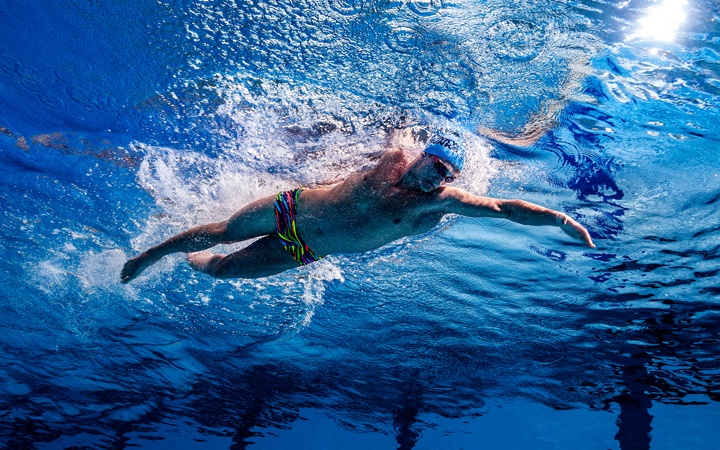By Robert Sullivan, firstpart of a five-part series
It’s a valid question: Why do they swim, why do they continue to swim? Looking at the bottom stripe of a pool for a dozen years of your life can get old. But Greeley has dozens—scores—of kids who choose to not only swim, but be members of our boys and girls swim teams, which demands an extra commitment—which commitment, it can be said, has led to a golden age for Greeley swimming. In dual meets, the girls team has been near indomitable for years, and the boys team, with the recent big win over Scarsdale, looks headed for another spotless season. Each team has won Sectional titles and such, and each has acquitted itself at States. There’s no question but that Greeley has been wonderful when wet.
But why do the kids do it, put in the hours for a team without a true home pool (they swim out of Purchase College, and you should go see them), choose to swim when they know they’re quite fit enough to run or throw or catch or grapple, carve out time in the Greeley week—which can be quite a long and complicated week, as we all know—for swimming? Again, it’s a valid question.
Part of the answer, to swim parents observing from the bleachers, is self-evident. The Quakers team is tight and enthused and represents nothing so much as fun. It’s no secret that a lot of these kids are delivered to Greeley’s athletic program from “winter” swim teams, “club” teams that have these athletes swimming six or eight times a week, sometimes crack-of-dawn. The coaches there, like the Greeley coaches, are wise and fair, but the experience is, perforce, different. When the club kids race, they race against themselves. They race against “a time” that has already been registered: a bloodless, bygone statistic; they’re competing against previous “best times,“ which usually go unbested. In other words, they race solo, without bonhomie. Not very frequently—sometimes during relays—none but their silent parents are cheering them on, and more important: It’s not part of the culture for them to cheer openly for others. They’re loyal to their team, surely—the largest local feeder program for Greeley is an exemplary organization in Mount Kisco with a strongly beating heart—but they part in the parking lot with, “How’d you do?” “Eh, okay. Not great.” And then onward. Homework, and maybe the morning practice.
Then they join the high school team. They wear colors and attend pep rallies, co-equals for a moment with the sexy soccer stars or basketball players. The stripes at the bottom of the pool vanish, and it’s about going as fast as they can and getting a few points for the team, especially against such as Scarsdale, when every point will matter. They cheer on teammates and are cheered on in turn. They are particularly partial to their new teammates who do not swim on club teams, sensing what this might mean to them: swimming initiates, now part of the mighty Quakers. A team is formed. After meets, many of them are offered rides home by parents but choose the bus. The bus is the best part of the experience, some of them feel; sometimes, there’s even McDonald’s. The bus, when it gets to the Greeley parking lot after dark, is immediately identifiable as the swim team bus: It’s all befogged as the kids are still humidified, not just moist but positively damp. Even the wrestling team bus doesn’t feature such cloudy windows.
The kids are pumped and smiling when they exit the bus—girls team members in the fall and boys team members in the winter, both. Now it’s on to homework and all the other stuff. This was a good four hours, and no one was focused simply on the bottom of the pool. It was swimming, sure, but not just swimming.
Bob Sullivan, a former editor and writer at Sports Illustrated, is more proudly a swim dad. His elder daughter and his son have competed in recent years for the Mount Kisco Boys & Girls Club Marlins and the Horace Greeley High School Quakers, both in New York. Sullivan recently wrote a series of articles for the Greeley boosters website speculating on why his kids and all the others stick with it, and they will be reprinted here in SwimSwam by permission of the author.
